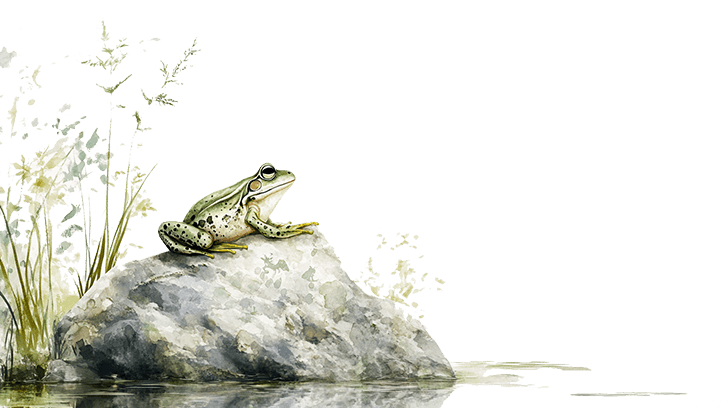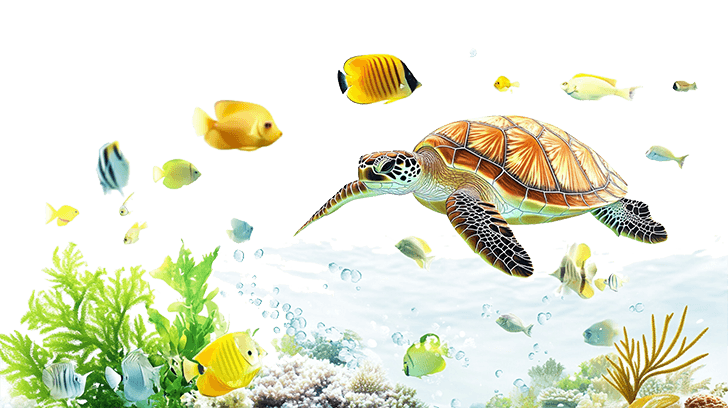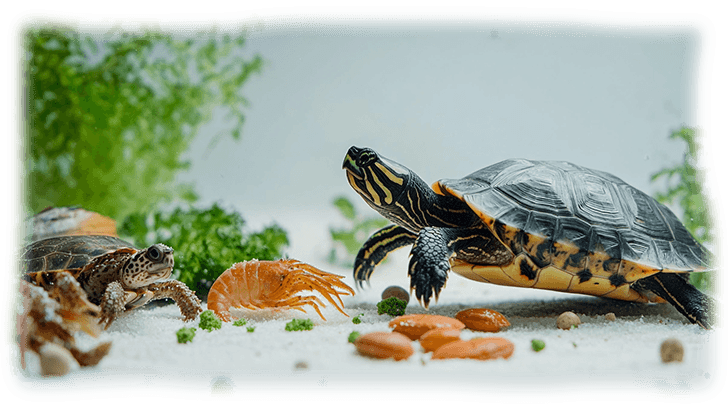Feeding and Care for Aquatic Pets
Feeding and caring for aquatic pets is more than just sprinkling flakes or pellets into the water. A proper diet, feeding schedule, and suitable environment are crucial for the health and well-being of each species, from fish and turtles to crustaceans and amphibians. This post covers the nutritional needs, recommended feeding schedules, and species-specific care tips for these fascinating water-dwelling pets.
Nutritional Requirements – Fish, Turtles, and More
Each species has unique dietary needs that go beyond a standard food pellet or flake. Understanding what each aquatic pet requires will help you provide them with a balanced and nutritious diet, contributing to their health, longevity, and behavior.
Fish – Fish diets vary significantly between species. Tropical fish, such as bettas, need a high-protein diet (Amazon affiliate link), often best provided through fish pellets, freeze-dried bloodworms, or brine shrimp. Goldfish, on the other hand, require a more carbohydrate-rich diet with plenty of plant-based food. While some fish are omnivores, others, like cichlids, lean toward either carnivorous or herbivorous diets. A mixed diet, rotating between flakes, pellets, and live or freeze-dried foods, is ideal for most fish, keeping them well-fed and promoting vibrant colors.

Turtles – Aquatic turtles, such as red-eared sliders, need a balanced diet of protein, leafy greens, and occasional fruits. (Amazon affiliate link) Commercial turtle pellets are often nutrient-rich but should be supplemented with fresh food. Protein sources like insects or feeder fish mimic the turtle’s natural diet. Leafy greens like romaine lettuce, dandelion greens, and even small portions of fruits like berries or apples can be provided a few times a week for variety. Calcium is essential for healthy shells, so consider offering calcium blocks or powdered supplements to keep your turtle strong and healthy.

Crustaceans – Crustaceans, like shrimp and crabs, are generally scavengers and will consume algae, plant matter, and sinking pellets. They require a high-calcium diet for their shells and benefit from foods specifically designed for crustaceans. Supplementing with vegetables, like zucchini or spinach, and small amounts of protein-rich foods such as bloodworms can enhance their diet. (Amazon affiliate link)
Amphibians – Amphibians, like frogs and newts, usually require a carnivorous diet. Frogs may consume insects like crickets or mealworms, while newts might eat small invertebrates. Amphibians should be fed every two to three days, with food portions adjusted to the size of the animal. Live or frozen food is often more appealing to amphibians as they prefer moving prey, which mimics their natural feeding behavior. (Amazon affiliate link)

Feeding Schedules and Portion Sizes – Timing is Everything
Establishing a feeding schedule and understanding portion sizes is vital to prevent overfeeding or underfeeding (Amazon affiliate link), which can lead to health issues and poor water quality. Here’s a guide to help you balance feeding times:
Fish – Most fish should be fed once or twice daily. A general rule is to offer only as much food as they can consume within two minutes. Overfeeding fish is common and can cause water pollution, as uneaten food decomposes. Certain fish, like bettas, may benefit from a day of fasting each week to promote digestive health.
Turtles – Juvenile turtles eat more frequently than adults, typically daily or every other day. Adults, however, may only need to be fed three times a week, as their metabolism slows with age. Offer small portions of food on a floating dish or directly into the water, adjusting based on how much they consume in ten minutes.

Crustaceans – Shrimp and crabs can be fed every other day, usually through sinking pellets or algae wafers. Keep an eye on any uneaten food, as crustaceans will generally clean up algae and other plant matter naturally. Avoid overfeeding, as excess food can affect water quality and attract pests.
Amphibians – Frogs and newts typically require feeding two to three times per week, with each feeding containing enough food to satiate them within a few minutes. Amphibians are known for their slow digestion, so stick to a light feeding schedule to avoid bloating and waste buildup in the tank.
Choosing the Right Food – Tailoring Diet to Each Species
The right food for each species can vary widely, so it’s essential to tailor your approach to your pet’s specific needs.
For fish – Opt for high-quality flakes or pellets as a base (Amazon affiliate link). Supplement with live or frozen food like brine shrimp or daphnia, especially for carnivorous fish species. Herbivorous fish can enjoy blanched spinach or lettuce, and omnivorous species can benefit from a combination. Variety in their diet prevents boredom and nutrient deficiency, ensuring they stay lively and active.

For turtles – Select a variety of turtle pellets and fresh foods (Amazon affiliate link). Turtles are omnivores and thrive with a combination of vegetables, live food like insects, and occasional treats of fruit. Ensure that their diet provides adequate calcium and vitamins, as deficiencies can cause metabolic bone disease, particularly common in turtles.
For crustaceans – Choose foods that sink to the bottom, such as pellets, algae wafers (Amazon affiliate link), and occasional blanched vegetables. Providing calcium-rich foods is crucial for shell health, as well as supplements if your shrimp or crab isn’t receiving enough minerals.
For amphibians – Live food options like crickets, worms, and small fish are ideal for frogs and newts. Amphibians are attracted to moving prey, and live food replicates their natural hunting instincts. Frozen options are acceptable but avoid dry or pelletized foods unless specifically designed for amphibians.

Care and Interaction – Observing Behavior to Guide Feeding and Environment
Each aquatic pet displays unique behaviors, especially around feeding times, which can give clues about their health and satisfaction with their environment.
Fish – Watch how your fish react during feeding. Aggressive or territorial behavior can mean they’re hungry or need more frequent feeding. Fish that ignore food may be stressed or have poor water quality in their environment.
Turtles – Turtles often “beg” for food and are known for their lively behavior when they see their owners approach. They recognize feeding times, so it’s best to maintain a routine. Watch for signs of overeating, like shell deformities or obesity, and adjust portions as needed.
Crustaceans – Shrimp and crabs are typically peaceful, spending their days scavenging for food. They’ll search the tank floor for leftovers and algae, which naturally keeps them entertained and well-fed. Observing their activity levels can help determine if they need more food or environmental enrichment.
Amphibians – Amphibians often hide but become very active when they sense food. Frogs and newts are sensitive to their environment, and a lack of appetite may indicate stress. Ensure they have adequate hiding spots, as they thrive in environments where they feel secure.

Environment and Maintenance – Setting Up the Ideal Habitat
Feeding and caring for aquatic pets go hand in hand with maintaining their environment, as a healthy habitat ensures they thrive.
- Clean Water – Regularly test and maintain water quality to reduce ammonia and nitrate levels (Amazon affiliate link), especially after feeding. Unconsumed food can quickly degrade water conditions.
- Proper Lighting – Turtles and some fish need UVB lighting to metabolize nutrients like calcium. LED lights or indirect lighting can also help your pets establish natural day-night cycles. (Amazon affiliate link)
- Temperature Control – Aquatic pets are sensitive to temperature, so keep the tank within the recommended range for each species. (Amazon affiliate link)
With the right food, feeding schedule, and environmental care, your aquatic pets can thrive and display their unique personalities. These small but important steps in feeding and maintenance create a well-balanced environment that brings out the best in each species, whether it’s a curious fish, a playful turtle, or an energetic amphibian. Dive deeper into each species’ individual feeding needs, and watch as they flourish in their watery world!
Affiliate Disclosure
This post may contain affiliate links, which means I earn from purchases made through links. Please see the privacy policy page for more details.







